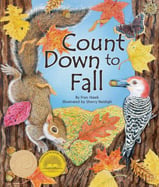Alignment to Standards for NM

| Grade | Number | Standard |
|---|---|---|
| 1 | GEO-1)2.F.1 | Describe the role of resources in daily life. |
| 1 | SC-1)2.1.1.2. | simple properties of matter (e.g., hardness, flexibility, transparency). |
| 1 | SC-1)2.2.1.2. | living organisms inhabit various environments and have various external features to help them satisfy their needs (e.g., leaves, legs, claws). |
| 1 | SC-1)2.2.1.3. | differences and similarities among living organisms (e.g., plants, animals). |
| 1 | SC-1)2.2.3.3. | some parts of human bodies differ from similar parts of other animals (hands and feet/paws; ears). |
| 2 | GEO-2)2.C.1 | Identify ways in which people depend on natural and man-made environments including natural resources to meet basic needs. |
| 2 | SC-2)2.2.1.1. | diversity exists among individuals within a population. |
| 2 | SC-2)2.3.2.4. | characteristics of the seasons. |
| 3 | EC-3)4.A.2 | Define and categorize resources (e.g., human, financial, natural). |
| 3 | EC-3)4.A.3 | Identify a variety of products that use similar resources. |
| 3 | GEO-3)2.D.1 | Identify the components of the Earthês biosystems and their makeup (e.g., air, land, water, plants, and animals). |
| 3 | SC-3)2.2.1.1. | an adaptation in physical structure or behavior can improve an organismês chance for survival (e.g., horned toads, chameleons, cacti, mushrooms). |
| 3 | SC-3)2.2.1.2. | plants and animals have structures that serve different functions (e.g., shape of animalsê teeth). |
| 3 | SC-3)2.2.1.4. | Classify plants according to their characteristics (e.g., tree leaves, flowers, seeds). |
| 4 | SC-4)2.2.1.1. | different living organisms have distinctive structures and body systems that serve specific functions (e.g., walking, flying, swimming). |
| 4 | SC-4)2.2.1.3. | roots are associated with the intake of water and soil nutrients and green leaves are associated with making food from sunlight (photosynthesis). |
| 4 | SC-4)2.2.2.2. | a change in physical structure or behavior can improve an organismês chance of survival (e.g., a chameleon changes color, a turtle pulls its head into its shell, a plant grows toward the light). |
| 4 | SC-4)2.2.2.3. | living organisms have developed characteristics to improve chances of survival (e.g., spines on cacti, long beaks on hummingbirds, good eyesight on hawks). |
| K | GEO-K)2.F.1 | Identify natural resources. |
| K | SC-K)1.1.3.1. | the relative sizes and characteristics of objects (e.g., bigger, brighter, louder, smellier). |
| K | SC-K)2.1.1.1. | objects are made of different types of materials |
| K | SC-K)2.1.1.2. | different materials have different properties (e.g., color, odor). |
| K | SC-K)2.2.1.1. | major structures of common livings organisms (e.g., stems, leaves, and roots of plants; arms, wings, and legs of animals). |
| K | SC-K)2.2.1.2. | differences exist among individual living organisms (e.g., plants, animals) of the same kind. |
| K | SC-K)2.2.2.1. | similarities and differences in the appearance and behavior of living organisms (e.g., plants, animals). |
| K | SC-K)2.3.2.1. | changes in weather occur from day to day and season to season. |